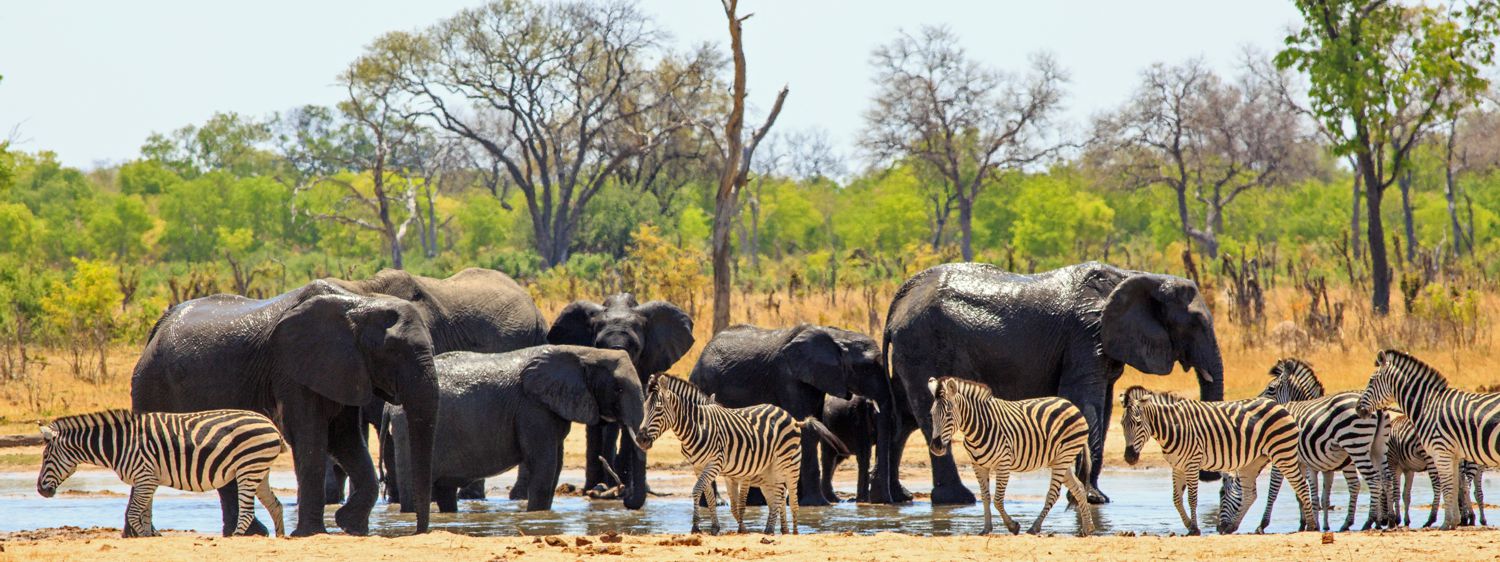Hwange National Park, located in western Zimbabwe, is the largest national park in the country and a paradise for nature lovers and wildlife enthusiasts. The park spans approximately 14,650 square kilometers and offers an impressive variety of landscapes and habitats.
The ecosystem of Hwange National Park includes dry savannas, dense forests, and seasonal floodplains. These diverse habitats provide ideal conditions for a rich variety of flora and fauna. During the rainy season, the park transforms into a green paradise, while the dry season reveals vast plains and waterholes.
The waterholes in Hwange National Park play a crucial role during the dry season. As the rivers and streams dry up, these waterholes become vital sources of water for the park's wildlife. Elephants, in particular, are often seen congregating around these waterholes, using their trunks to dig for water and creating mud wallows to cool off. The waterholes also attract a variety of other animals, including buffalo, zebras, and numerous antelope species, making them excellent spots for wildlife viewing. Predators like lions and leopards are often found near these waterholes, taking advantage of the concentration of prey.
The unique combination of breathtaking scenery and abundant wildlife makes Hwange National Park truly special. Visitors can enjoy game drives and guided walks, offering an intimate and immersive experience with nature. The park's remote location and unspoiled wilderness provide a sense of adventure and tranquility that makes every visit unforgettable. Hwange stands out from other parks in the region due to its vast size, which allows for a greater diversity of habitats and wildlife. The park's elephant population is one of the largest in Africa, making it a significant draw for visitors. Additionally, Hwange's diverse habitats, including savannas, forests, and floodplains, offer a wider range of ecosystems compared to other parks like Mana Pools, which is more focused on riverine and floodplain environments. With over 400 bird species, Hwange also offers a richer birdwatching experience compared to some other parks in the region.
At a glance
Why you should visit
Hwange National Park is a premier destination for those seeking an exceptional safari experience. As the largest national park in Zimbabwe, Hwange boasts an incredible diversity of wildlife and landscapes. The park is renowned for its large elephant population, one of the largest in Africa, offering visitors the chance to witness these majestic creatures in their natural habitat. Additionally, Hwange is home to a variety of predators, including lions, leopards, and wild dogs, making it a prime location for thrilling game drives and wildlife viewing. The park's diverse ecosystems, ranging from dense woodlands to open savannahs, provide a stunning backdrop for photography and nature walks. With fewer tourists compared to other popular safari destinations, Hwange offers a more intimate and immersive experience with nature.
Our favourite time to visit
The best time to visit Hwange National Park is during the dry season, from July to October. During this period, wildlife congregates around the remaining water sources, creating excellent game-viewing opportunities. The cooler temperatures and clear skies make for comfortable and enjoyable safari experiences. This is the ideal time to witness large elephant herds, predator activity, and the park's breathtaking landscapes at their most vivid. Whether you're an avid photographer, a nature lover, or an adventure seeker, Hwange National Park promises an unforgettable journey into the heart of Africa's wild beauty.



